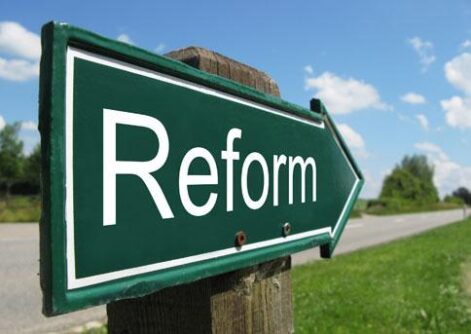A letter to the editor of The Chronicle of Philanthropy.
This letter to the editor, republished with permission, originally appeared in The Chronicle of Philanthropy on April 29, 2021.
In a recent op-ed for the Chronicle, we expressed support for the Initiative for Accelerated Charitable Giving proposed by philanthropist John Arnold and Boston College law professor Ray Madoff. In particular, we applauded its call for salary limits on family members associated with a foundation.
In a letter to the editor in response, the leadership of the Philanthropy Roundtable called it “curious” that we “take no issue with the staggering staff and overall administrative expenses incurred by the largest foundations, which are legally counted as part of their required 5 percent disbursement.” The letter pointed out that “in 2018 alone, the Ford Foundation reported $136 million in overhead expenses, making up 18 percent of their overall payout. Training government’s guns on foundations that have only a tiny proportion of the assets and overhead expenses of megafoundations defies logic.”
We agree. If we’re going to move beyond the limits of the Arnold-Madoff initiative and consider larger possible reforms to the system, we enthusiastically support the Roundtable’s willingness to challenge the “staggering” and shameful redirection of charitable dollars into bloated foundation staff and administrative costs.
The arguments for counting these expenses in the 5 percent disbursement requirement made sense when the Tax Reform Act of 1969 first established foundation giving obligations, shaking up the philanthropic world. Previously, foundations had no such obligation and, in some cases, engaged in only modest grant making. The distribution requirement pushed foundations to give more, but only at a rate that wouldn’t diminish the real value of the underlying endowment. To sweeten this requirement, the new law also allowed foundations to count their grant-making expenses toward the 5 percent distribution requirement.
There were three rationales for doing this. First, it was seen as a way to encourage foundations to professionalize their staffs at a time when many prominent philanthropic organizations had few paid employees and proposals were reviewed by family members and those with connections to the original donor. Second, a staffed foundation seemed likely to do a better job at making smaller grants to underserved communities, rather than giving most of the funds to big institutions like hospitals, museums, and universities. Finally, it was felt the provision would encourage foundations to do more international work, especially in countries where identifying and monitoring suitable grantees could be challenging.
Circumstances are dramatically different today. Very few foundations with assets of more than $50 million rely solely on family or volunteer staff for grant making. The changing political and social environment of the past 50 years has provided a strong incentive for foundations to reach out to excluded communities, as the response to the Black Lives Matter movement makes clear. Similarly, among the largest American foundations, international giving is at an all-time high. In 1969, the Ford Foundation was one of the few donors that worked internationally, and much of its money went to Europe. Today, Gates, Packard, Rockefeller, Open Society, and many others are supporting work in Africa, Asia, and Latin America.
One could look at this record and argue that the incentive worked. But does it need to remain? Most foundations stay close to their 5 percent distribution requirement, and the current policy provides little reason to curb staff, travel, and other expenses. Many philanthropic institutions keep their expenses at or below 10 percent of their distribution requirement.
However, as the Roundtable leadership correctly observed, some of the largest grant makers spend a much higher percentage of their payout obligation on operating expenses. Ford, Gates, Robert Wood Johnson, and Kellogg all spend around 20 percent of their distribution requirement on these expenses. The Rockefeller Foundation is the champion among the big players with 25 percent of its charitable spending going to salaries, travel, and related expenses.
With no legal incentive to control expenses, compensation of senior foundation officials has grown at a rapid rate. Ford, for example, has six employees outside of its investment team who made more than $500,000 in total compensation in 2019. The president of the Rockefeller Foundation made more than $1.2 million that year.
The biggest constraint on expenses is the risk of salaries, board travel, and similar costs appearing on the front page of the local newspaper. But transparency in this case seems to be an ineffective control on costs. The result is that money that should go to worthwhile nonprofits is instead diverted to salaries, fancy buildings, and first-class travel. For 10 of the largest grant-making foundations in America, these charitable expenses are more than $1.5 billion.
Like the Philanthropy Roundtable, we believe it’s time to raise serious questions about counting staggering staff and administrative expenses as part of the disbursement requirement. And we call upon large foundations to join us and the Roundtable in this effort.
The intention of our initial op-ed and this letter is to remind Americans that the charitable world is one of our nation’s greatest strengths but that it is increasingly under threat from a variety of sources. Some want to contort charitable nonprofits into tax-deductible activist political cadres. Some want to support family and friends, bloated staffs, and elegant headquarters, using dollars otherwise intended for charitable purposes. Some want to park deductible dollars indefinitely in donor-advised funds, with no certain date for disbursement to working charities.
Certainly those can be pursued using other means within a free republic. But they aren’t charity, and they aren’t what the charitable deduction was intended to support. It’s time for a serious national conversation about reforms to reverse this course. The Arnold-Madoff proposal, as well as the Roundtable’s challenge to bloated foundation expenses, should be considered among possible reforms needed to return charity to its true purpose.





